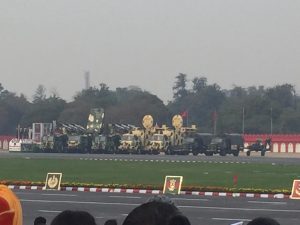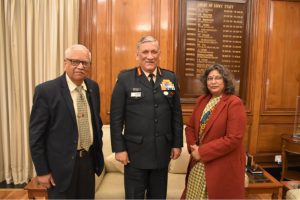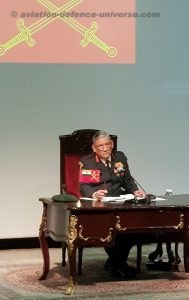
By Maj Gen (Dr) P K Chakravorty, VSM (Retd.)
New Delhi. 13 January 2019. The Army Day is celebrated traditionally on 15 January to mark the taking over of the first Indian Commander-in-Chief by General (later Field Marshal) K M Cariappa, from General Francis Robert Bucher. This occurred on 15 January 1949.
The Army Day in 2019 would be the 71st parade to commemorate the historic event. The parade would display the equipment and soldiers of the Indian Army. The celebrations are held across the Indian Army and are an occasion for awarding personnel and units for their bravery and distinguished service. On this occasion it would be appropriate for us to know that the Army is currently modernising its equipment to be prepared to meet its operational challenges.
India faces a two front collusive hybrid threat from China and Pakistan as also encounters a half front created by insurgency. Currently equipment held by the combat arms is dated and has been gainfully optimised to its ultimate durability. Apart from this both China and Pakistan are undertaking a Revolution in Military Affairs with regard to their Armed Forces. China has a focussed plan on modernisation of its Armed Forces which has resulted in the Peoples Liberation Army transforming itself to a well equipped force with state of the art weapons. The current President and Commander-in- Chief has introduced reforms to make the PLA a professional organisation.
Pakistan on its part has left no stone unturned to modernise its forces with assistance from China. The current strategic situation has witnessed complex situations along the Line of Actual Control (LAC) with China and on the Line of Control (LoC) with Pakistan. Further at the 19th Party Congress, President Xi Jinping has been declared President for life. War is an irrational act which occurs without any warning. Accordingly there is a dire need to modernise our forces to enhance their capabilities to meet challenges.
The Long Term Integrated Perspective Plan has been approved for the Armed Forces up to 2027. However the areas which need attention are many and all would not be practicable in this period of 8 years. Accordingly a few areas which are significant are elucidated.
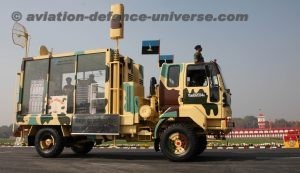
The Infantry soldier has to be capable of fighting a battle with modernised equipment. Case is on for a modern rifle, Machine Gun and Carbine. The F- INSAS is an acronym for the term Future Infantry Soldier as a System. It was to provide the future infantry soldier with state of the art weaponry and combat gear. The system has undergone a change recently. Due to budgetary constraints the Indian Army has recently decided to split the F-INSAS into two separate projects. The new program will have two components: one arming the modern infantry assault rifle, carbines and personal equipment such as helmet and bullet proof vests.
The second component is the Battle Field Management System (BMS). The BMS will include palm top communication system and helmet mounted camera. The project will impact each soldier but being lesser priority than the weapon system.As per reports the reports of September 2018, the US made rifle the SIG Sauer’s SIG 716 finished with the lowest quote for Army’s fast track procurement of 72000 new automatic rifles. This would be a 7.62 mmx51mm rifle and as regards Carbine Caracal CAR 816 of UAE has the lowest quote. Commercial negotiations would be in the final stages. Both these weapons are likely to be inducted within a year and phase out INSAS rifles and 9 mm Carbines. The initial order is likely to be 72,000 rifles and 94,000 Carbines. As far as the rest of the Army is concerned they will be equipped with 7.62 mm x 39 mm rifle. The contract is likely to be signed by 2019. This is only a small percentage of the total requirement of 6.5 lakh rifles which will be procured in due course.
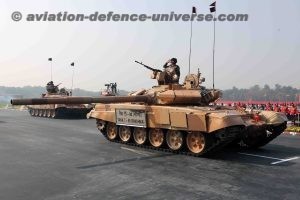
The next aspect pertains to Anti-Tank Guided Missiles (ATGMs). It was almost certain that the Spike ATGM of Israel would be acquired. Thereafter it was decided after the success of the Nag ATGM to develop the weapon indigenously. DRDO has tasked VEM Technologies Ltd to design and develop this missile which in many respects is similar to USA’s Javelin ATGM. The missile is Fire and Forget with a range of 2500 metres, Lock on Before Launch, Tandem Warhead weighing 18.5 kg enabling the system to be man packed. The field trials are expected in mid-2019 and should be inducted possibly by mid-2020. This would enhance the Anti-Tank capability of Infantry Battalions.
Network Centric Warfare (NCW) is a critical area for modernisation. This area for modernisation comes under the Director General of Information System (DGIS) and encompasses the fields of Tactical Command, Control, Communications and Intelligence (Tac C3I) comprising Central Information Decision Support System (CIDSS), Battlefield Surveillance System (BSS), Artillery Combat Command and Control System (ACCCS), Battlefield Surveillance System (BSS), Air Defence Control and Reporting System (AD C&RS) Electronic Warfare System (EWS) and BMS for the infantry soldier. While reasonable fielding in parts of the Field Army have been done with regard to ACCCS others are in or reaching the test bed stage. As regards BMS the project has been temporarily shut down to provide funds for Small Arms.
Weaponry is an important aspect for modernisation. The aspect regarding infantry weapons has already been discussed. As regards Armour Fighting Vehicles, there is an additional requirement of T 90 tanks. Further the modified Arjun Mark 2 must successfully complete user trials. The Directorate General of Mechanised Forces has placed a Request for Information for the Future Ready Combat Vehicle. This would replace the T 72 and would be a medium tank having a weight lesser than 50 tons. Further there is a proposal to look for a Light tank for the mountains. With respect to Armoured Personnel Carrier (APC) BMP 2, there is a requirement to upgrade the engine to a 350 Horse Power (HP). The project is currently stuck with procedural delays as one of the Defence Manufacturers has stated that they would like to make the prototype under Make II without Government funding. This has led to procedural delays. The next aspect pertains to the Future Ready Combat Vehicle which is a project of the Directorate General of Mechanised Forces. The aim is to have 1770 Combat Vehicles with the following variants:-
- Tracked Main Battle Tank-Primary variant.
- Tracked Light Tank.
- Wheeled Version.
- Bridge Layer Tank (BLT).
- Trawl tank and mine ploughs.
- Armoured Recovery Vehicle.
- Self-Propelled Artillery Gun/Howitzer.
- AD Gun/ Missile System.
- Engineer Reconnaissance Vehicle.
- Armoured Ambulance.
- Currently issues are at the planning stage and DRDO has begun Work on few systems to avoid delay
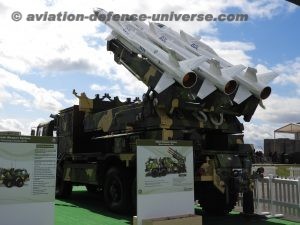
Artillery is an arm which is getting modernised with its ability to induct 155 mm Dhanush, 155mm Ultra-Light Howitzer, 155 mm Self Propelled K 9 Vajra Gun and Steep Dive 400 Km BrahMos Super Sonic Missile. It is heartening to note that order has been placed for 200, 155 mm Advanced Towed Artillery Gun System designed by DRDO and prototypes prepared by Bharat Forge and Tata Power. Thus Artillery is on track for modernisation.
The Army Air Defence has inducted the Akash Surface to Air Missile System and indigenous production with collaborations would be done in the case of Quick Reaction Surface to Air Missile System as also Very Short Range Air Defence System and Guns. It is creditable that two Regiments of Akash Missiles have been ordered from DRDO. Russia’s Rosoboronexport will soon be supplying Very Short Range Air Defence (VSHORAD) missile system worth $ 1.3 billion to the Indian Army Air Defence. The Igla-SA-24 system will replace the Igla system currently being used. The total order will be 5175 missiles out of which 2300 will be bought in fully formed condition. Hopefully the induction should commence in 2019. As regards the Short Range Surface to Air Missile (SRSAM) System the Israeli Spyder is likely to be selected. Spyder is a quick reaction system with a range of 15 Km at an altitude of 9 Km and is adept at supporting formations on the move. This has yet to be finalised but would modernise weapons of Army Air Defence,
The other areas which impact modernisation are the need to fill up existing deficiencies of ammunition, induction of robotics and elements of Non Contact warfare. Further Nano technology will enable miniaturisation as well as reduction of weight and size of critical equipment needed to be heli lifted in mountainous areas. Direct energy weapons would also make a sizeable difference in the operational environment. A holistic look would enable us to comprehend that these equipment are a Sine Qua Non to fight a two front collusive threat comprising China and Pakistan.

There is an operational need for the equipment mentioned above to fight effectively. The procurement process has yet to pick up speed despite the formulation of a new Defence Procurement Procedure 2016 .For quicker response and effective results a level playing field must be created between the private and the public sector. This would require the Ministry of Defence and the Indian Army to play a fair game to enable the best person is selected. Further timelines are adhered and decisions taken on cases which land up in a single vendor situation. In addition Task Forces directly under the Defence Minster are to be formed for important projects.
The next aspect pertains to the field of technology. It would be extremely difficult to start from scratch. It would be prudent to form Joint Ventures or co development as has been done by DRDO in the case of BrahMos missile, Long Range Surface to Air Missile (LRSAM) and Medium Range Surface to Air Missile (MRSAM). It is interesting to note that currently Russia, Israel and to some extent France and the United States are keen to provide technology which is needed for critical areas.
Viewing the requirements of the Indian Army practically all the items can be easily procured provided the Ministry of Defence and the Indian Army work as a unified team which can take decisions speedily by frequent interactions. It is heartening to have the Army Defence Bureau formed which is infusing a whiff of fresh air into Army’s interaction with technology. All cases stated ibid are in the pipeline and vigorous pursuit would lead to positive results.
As regards ammunition deficiencies, this is a critical area and inescapable amount must be acquired by direct purchase from the Original Equipment Manufacturer while the technology absorption process is on for the indigenous manufacture by the Ordnance Factory Board (OFB). In case the OFB is finding it difficult, the Army must make up the requirement for the short term by imports. Substantial quantities of ammunition have recently been imported to enhance existing stock holdings. In addition private sector can now be given the task of manufacturing ammunition as per latest guidelines.
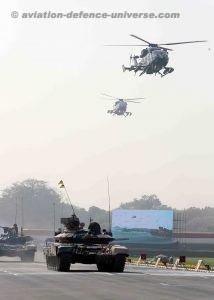
The difficult areas are the new technologies pertaining to robotics, nano technology for miniaturisation and direct energy weapons to including multifarious uses of laser and Microwave. These are areas where the DRDO must focus to make a dent by research with assistance from countries willing to share expertise. More often technology is available but the absorption and conversion to a workable model takes time. DRDO must actively involve with the user and the industry to find avenues through critical technologies. Synergising all these agencies will enable us to find innovative answers to these problems.
The Indian Army needs to modernise speedily to meet the operational challenges. Bulk of the issues deal with hastening of processes which can be managed by effectively synergising the Ministry of Defence and the procurement staff at Army Headquarters. Further DRDO as well as the industry have to play their part effectively. This joint effort would enable us to expedite the modernisation process. 15 January 2019 which would be the 71st Army Day must see us focus deeply into modernisation of the Indian Army to fight a two front war effectively.
(Major General (Dr) P K Chakravorty (Retd.) is a Delhi based defence analyst, former Additional Director General Artillery and Defence Attaché Vietnam. The views in the article are solely the author’s. He can be contacted at editor.adu@gmail.com.)


































